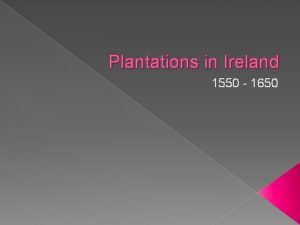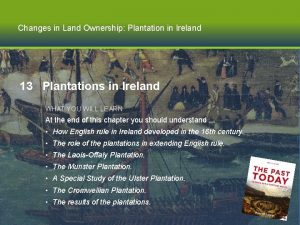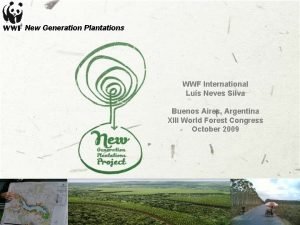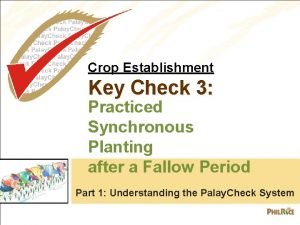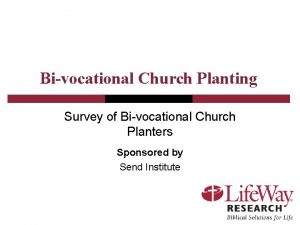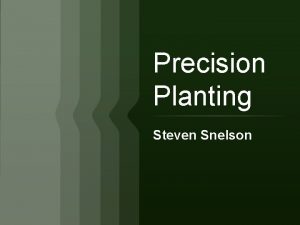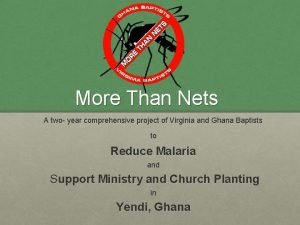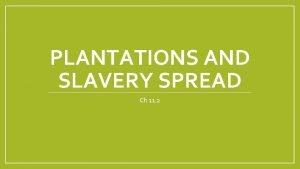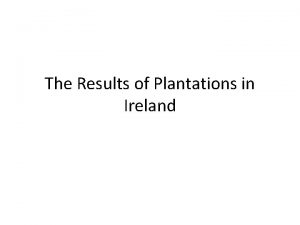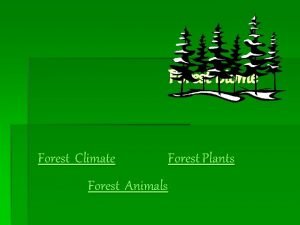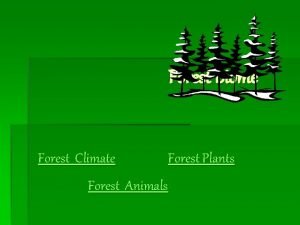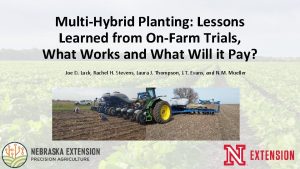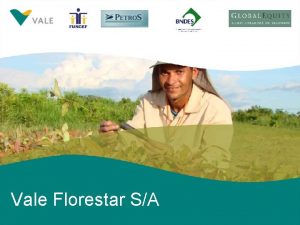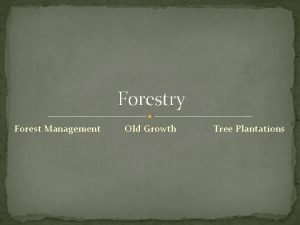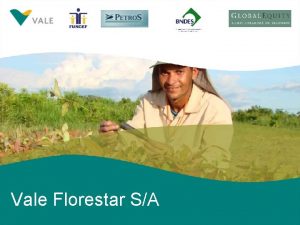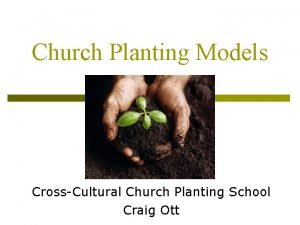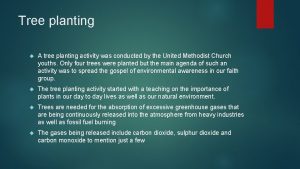The economics of forest plantations and onfarm planting















- Slides: 15

The economics of forest plantations and on-farm planting as a rural incomegenerating activity Claire Coote Issues for the Sustainable Use of Biomass Resources for Energy, Colombo, August 2005

Compare UK & Sri Lanka Situation § Both islands, net energy importers, forestry sector not a major industry but important in certain regions § Both recent converts to need for biomass generation § In UK driven by need to reduce carbon emissions, plus interest to support rural areas § In Sri Lanka driven by need to reduce fuel imports and extend power supply to more people, plus interest in improving rural livelihoods

Sri Lanka: Considerable experience in biomass production & use § Knowledge of species and seed selection for fast growth rates, calorific value § Woodfuel management techniques to maximise efficiency § Smallholder expertise should not be overlooked § Need to consider possible association with low efficiency and drudgery

UK: Short Coppice Rotation § Despite Energy Crops Scheme subsidy farmers been slow to invest § Unused to crops without annual payment § Key is establishment of end users § Need for more research to increase yields & provide better idea of costs and returns § Support to producer groups appears successful § Some concerns about visual impact

The TV Bioenergy Coppice Contract § § § § § Growers decides no. of hectare (3 ha min) Grower controls crop husbandry and management TVBC guarantees index-linked min price £ 36/odt Grower can become shareholder in group TVBC assist with planting, harvesting & transport TVBC contract for 10 years (3 harvests) TVBC provides technical and support services Grower must be located in certain region Grower pays small annual membership fee Source: www. tvbioenergy. co. uk

UK: SRC Costs & Returns § Need to compare costs and returns of alternative farm enterprises: gross margin § GM usually based on one year’s figures § SRC income not received each year so equivalent annual value (EAV) calculated § EAV estimate £ 203 - £ 287 § Lower than GMs for arable crops § Comparable GM with upland sheep farming

UK SRC: other considerations § Price paid per oven dried tonne: £ 30 -40 § Farmers have to pay for chip drying & haulage § Conflict of interest between growers & power generators § Generators able to pay £ 25 – 35/tonne § Growers need £ 30 – 60/tonne

Sri Lanka: Gliricidia SRC § Grown in two farming systems § Coconut intercrop on plantations § Intermittent planting on smallholdings § Estimated revenue of Rs. 9 per tree per annum

Sri Lanka: Gliricidia SRC § Need more information on costs of production, including opportunity cost of labour ØParticularly for women § Must consider pest control including goats and cattle § Need to value additional benefits

Economic Costs & Benefits § Societal viewpoint § Employment creation § Import substitution of fossil fuel § Local economic development

Bioenergy Employment Creation Employment per unit of energy in person years Source: Remedio, E Socio-economics of Bioenergy, FAO Person years Intensive SH production Intensive intercropping Large-scale energy forestry Establishment 112 71 34 Weeding 338 196 59 Harvesting 248 251 85 Transport 70 71 51 Chipping 13 13 13 Administration 19 19 11 Total 800 612 253

Social Issues § Understanding why people grow trees ØKeeps land in productive use ØTrees may be planted where lack of capital prevents farmers from growing more capital-intensive crops ØDiversification of farm production ØProvide products and income in between crop harvests § Concerns over growing trees as cash crop – fears of land being withdrawn from essential food production

Social Issues 2 § Land tenure and security of tenure ØLack of secure tenure has been assumed to inhibit tree growing ØEvidence from other countries that this is less critical than other factors – credit, markets ØSri Lanka experience with poor establishment of farmer woodlots due to lack of lease agreements with Forestry Dept. ?

Social Issues 3 § Existing uses of so-called scrub/waste land § Need to investigate if this land is used e. g. for grazing § Animal herders may resent trees planted and set fire to them

Thank you for your attention
 Southampton county, virginia plantations
Southampton county, virginia plantations Plantations of ireland
Plantations of ireland Cromwellian plantation
Cromwellian plantation Wwf
Wwf Maastricht university school of business and economics
Maastricht university school of business and economics What is mathematical economics
What is mathematical economics Othello falling action
Othello falling action Foreshadowing in othello
Foreshadowing in othello Keycheck
Keycheck Introduction to church planting
Introduction to church planting Bivocational church planting
Bivocational church planting Objective of flower
Objective of flower Swath definition
Swath definition Agriculture hearths
Agriculture hearths Examples of naysayers
Examples of naysayers Nets church planting
Nets church planting

